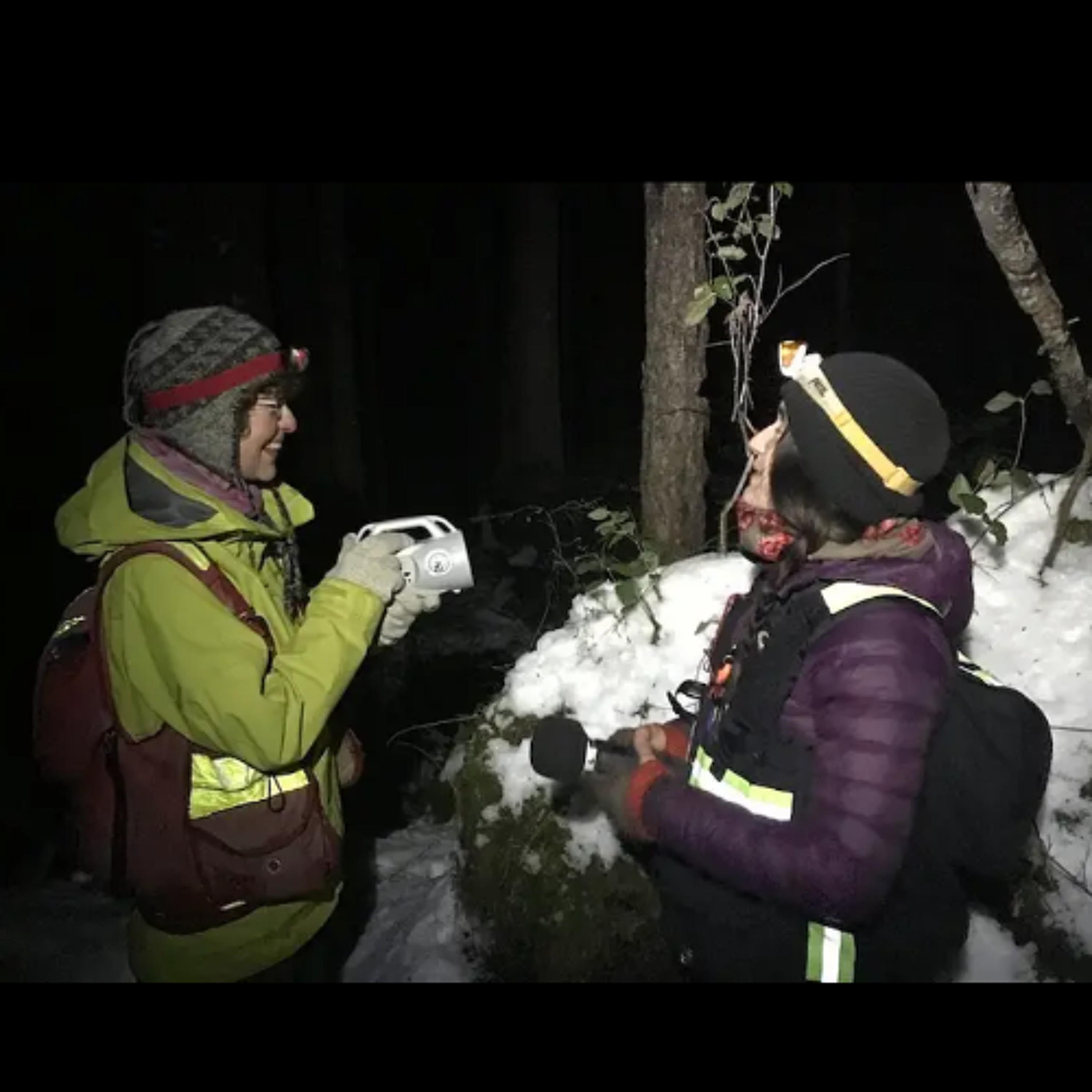Earthday & The New Exhibits at Wild Cortes
- Author
- roy.hales9.gmail.com
- Published
- Wed 30 Apr 2025
- Episode Link
- https://soundcloud.com/the-ecoreport/earthday-the-new-exhibits-at
Roy L Hales/Cortes Currents - It was Earth Day at Wild Cortes, Cortes Island’s centre for natural history, community science and collaborative conservation.
“It is a very exciting place to be, with new displays coming in every year, always on Earth Day. That's probably the most important thing to say. It's Earth Day, so let's celebrate,” explained Sabina leader Mense, a professional advisor to Wild Cortes.
The centrepiece of this year's displays is the ‘Humpback Comeback’ section highlighting the stunning recovery of Humpback Whales in our local waters.
Sabina Leader Mense: “They used to be everywhere, then the Douglas Whaling Station was set up in Whaletown Bay. Its history is in the little display here, ‘the Dawson Whaling Company, 1869.’ It only lasted a year. They realized it was not the most optimum site, so moved it down to Hornby Island the next year. So we only had the legacy of bonking Humpback Whales on the head and flensing them for a year, but the name stuck. That's how ‘Whaletown’ got its name. The Humpbacks completely disappeared. We eliminated them from the Strait of Georgia, not a Humpback to be seen.”
Cortes Currents: When did they start coming back?
Sabina Leader Mense: “Some of the first Humpbacks that we saw were in the early eighties. I was working out at the Bamfield Marine Station,running research programs, but I put myself through university fishing off the West Coast and would interact with the fishermen. They started telling me that they were seeing Humpback Whales out on the finger bank in the early eighties and sure enough, the Humpbacks were coming slowly back to the coast of BC.”
“Then we have this brilliant work by the Marine Education Research Society (MERS) whose work Donna Collins is featuring in this display.”
“The Marine Education and Research Society has been documenting them and identifying them individually,” said Collins, who is also one of Cortes Wild's co-curators.
“Donna has done a fantastic job. There's lots of pictures and all kinds of interesting things, including two sea lion skulls, both of which were found on local beaches,” added Laurel Bohart, Cortes Wild’s other co-curator.
Sabina Leader Mense: “We can reliably identify Humpback Whales from the underside of their tail flukes, as well as the little nubbin that we call the dorsal fin but the underside of the tail flues is very characteristic. They have these colorations, black and white splotches, big chunks taken out of them, very readily identified by the underside of the tail flukes.”
Donna Collins: “As of 2024, 776 Humpback Whales have been identified.”
Sabina Leader Mense: “That’s in their entire catalog for BC.”
“We brought Jackie Hildering, from MERS, in six years ago. 86 individual Humpback Whales were identified in 2019. This figure of 86, why it's so impressive is it's from here. There were 86 individua Humpbacks found in the area from the northern end of Cortes to Powell River, across to Heriot Bay on Quadra Island.”
